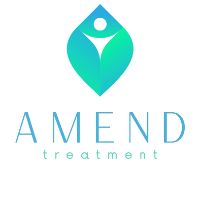Wellness Rehabs: A Holistic Path to Substance Abuse and Mental Health Recovery
In recent years, the concept of "wellness rehabs" has gained momentum in the field of addiction and mental health treatment. As more people seek comprehensive healing that addresses not just the symptoms but the root causes of their struggles, wellness-focused facilities offer a more integrative, personalized approach to recovery. Unlike traditional rehabilitation programs that emphasize clinical or medical interventions alone, wellness rehabs prioritize overall well-being by incorporating elements like nutrition, physical activity, mindfulness, alternative therapies, and personalized care. This holistic model is designed to restore balance to the body, mind, and spirit, providing a more sustainable foundation for long-term recovery.
The Philosophy Behind Wellness Rehabs
At the heart of wellness rehabs is the belief that recovery is not just about stopping substance use or stabilizing mental health symptoms—it's about helping individuals thrive in all areas of their lives. These programs view addiction and mental health disorders not merely as isolated illnesses but as symptoms of deeper imbalances in a person's physical, emotional, and spiritual health.
Wellness rehabs typically combine evidence-based therapies like cognitive-behavioral therapy (CBT), dialectical behavior therapy (DBT), and medication-assisted treatment (MAT) with complementary approaches such as yoga, meditation, acupuncture, equine therapy, art therapy, and nutritional counseling. This multidimensional approach allows clients to heal on multiple levels, providing tools that enhance resilience, reduce stress, and improve overall quality of life.
For instance, mindfulness practices and breathwork may help clients regulate emotions and reduce cravings, while proper nutrition and physical exercise restore energy and repair damage caused by substance abuse. By addressing lifestyle factors and underlying emotional trauma, wellness rehabs aim to empower individuals with the knowledge and habits necessary to maintain sobriety and mental wellness long after they leave treatment.
Core Components of Wellness Rehab Programs
Wellness rehabs are typically set in serene, natural environments that promote relaxation and introspection. Facilities may be located in mountains, near oceans, or in rural retreats to offer a sense of escape and peace that urban settings may lack. The atmosphere is intentionally designed to foster healing and comfort, far removed from the clinical appearance of some traditional treatment centers.
Key components of a wellness rehab program often include:
- Holistic Therapies: These include practices such as Reiki, sound healing, aromatherapy, Tai Chi, and massage therapy. These therapies in wellness rehabs aim to promote self-awareness, stress reduction, and balance in the nervous system.
- Nutrition and Functional Medicine: Diet plays a crucial role in brain health and recovery. Wellness rehabs typically employ nutritionists who create customized meal plans to support physical healing. Some centers also use functional medicine to address hormonal imbalances, nutrient deficiencies, or gastrointestinal issues that can impact mental health.
- Physical Activity: Movement is integral to recovery. Programs include structured physical activity such as hiking, swimming, fitness classes, and yoga. These activities in wellness rehabs help increase endorphins, improve mood, and build physical strength.
- Mindfulness and Mental Clarity: Practices such as guided meditation, journaling, and gratitude exercises are used to cultivate emotional regulation and mental clarity. These techniques help clients develop the inner strength needed to manage stress and triggers.
- Personal Development: Wellness rehabs also emphasize life skills development, including time management, goal setting, financial literacy, and communication. Some centers offer career coaching or spiritual counseling to help clients realign with their values and life purpose.
- Integrative Clinical Care: While wellness is the foundation, reputable centers still include licensed therapists, psychiatrists, and medical professionals to provide conventional treatments where needed. The integration of traditional and alternative care ensures a well-rounded treatment experience.
Benefits and Suitability of Wellness Rehabs
Wellness rehabs are particularly well-suited for individuals who seek a more personalized and nurturing approach to recovery. They may appeal to people who have tried conventional rehab programs without success, or to those who prefer a more natural and preventive style of healing. The flexibility and diversity of treatment options can be especially beneficial for individuals with co-occurring disorders (dual diagnosis), as these programs allow for the simultaneous treatment of substance abuse and mental health challenges.
Another key benefit of wellness rehabs is their emphasis on relapse prevention through lifestyle change. Rather than relying solely on behavioral modification or abstinence-based programs, wellness centers equip clients with tools to create long-term wellness plans. These plans often include aftercare resources such as ongoing therapy, peer support groups, digital wellness tools, and alumni communities that encourage accountability and connection.
However, wellness rehabs are not a one-size-fits-all solution. The high-end nature of many of these programs means they may come with a significant financial cost, often not fully covered by insurance. It's also important for prospective clients to ensure that the program is licensed, employs qualified professionals, and maintains a balance between holistic practices and evidence-based treatments.
FAQs - Wellness Rehabs
A wellness rehab is a type of addiction and mental health treatment facility that takes a holistic, integrative approach to recovery. Instead of focusing solely on eliminating substance use, wellness rehabs emphasize whole-person healing—addressing the mind, body, and spirit. These centers often include therapies such as yoga, meditation, nutritional counseling, acupuncture, and fitness, alongside traditional counseling and behavioral therapy. Unlike traditional treatment centers, which may rely heavily on clinical or 12-step models, wellness rehabs often de-emphasize a one-size-fits-all model and prioritize personalized care and lifestyle change. The goal is not just sobriety, but also long-term wellbeing, reduced stress, improved physical health, and emotional resilience.
Yes, many wellness rehabs are well-equipped to treat individuals with dual diagnoses. These centers often integrate evidence-based psychiatric care with holistic interventions, allowing for a more comprehensive approach to both addiction and mental health. For example, a person struggling with both anxiety and opioid dependence might receive therapy such as CBT or EMDR for the mental health condition, alongside acupuncture and mindfulness training to manage physical symptoms and emotional triggers. Some wellness rehabs partner with licensed psychiatrists or clinical psychologists to ensure accurate diagnosis and ongoing medication management, blending holistic care with evidence-based medicine to address the full spectrum of a person’s needs.
Wellness rehabs typically offer a wide variety of holistic therapies that aim to promote healing beyond symptom reduction. Common options include yoga, meditation, equine-assisted therapy, massage, Reiki, tai chi, nature therapy, and expressive arts therapy. These practices are designed to reduce stress, restore physical vitality, and build emotional regulation skills. For example, a daily routine at a wellness rehab might include morning meditation, group counseling, a nutrition workshop, an afternoon hike, and a yoga session—all intended to foster a balanced and healing environment. These therapies complement clinical treatments and help patients develop sustainable wellness routines.
Nutrition is a foundational element in many wellness rehab programs. Poor nutrition is common among those recovering from substance use and mental health disorders, and restoring proper dietary habits can improve mood, energy levels, brain function, and overall physical health. Nutritionists at these centers often provide personalized meal plans, cooking classes, and education about the role of diet in emotional well-being and recovery. For example, someone recovering from alcohol use disorder may have vitamin deficiencies that affect mood and cognition. A wellness rehab might include vitamin-rich meal plans, supplements, and gut health education to restore balance and support neurological healing as part of their recovery.
Coverage for wellness rehabs varies widely. Some wellness-focused programs, especially those integrated into larger licensed treatment centers, may accept private insurance or Medicaid/Medicare for the clinical portion of treatment. However, many of the holistic services (like acupuncture, yoga, or massage) are considered "complementary" or "non-essential" by insurers and may not be reimbursed. High-end wellness rehabs often operate on a private-pay model, catering to clients who can afford to self-fund treatment. It’s important for individuals and families to verify insurance coverage in advance and clarify which services are included versus those considered out-of-pocket extras.
Staff at a reputable wellness rehab should include licensed clinicians, such as licensed professional counselors (LPCs), social workers (LCSWs), psychologists (Ph.D./Psy.D.), and, when applicable, addiction medicine physicians or psychiatrists. In addition to clinical staff, wellness rehabs often employ certified professionals for complementary therapies—such as registered dietitians, yoga instructors with trauma-informed training, licensed massage therapists, and holistic health coaches. Credentialing is crucial. For example, a nutritionist should have a degree and be registered with a professional body, while a therapist offering EMDR or CBT should hold proper clinical licensure. Clients should inquire about staff credentials during their intake process to ensure they are receiving expert, ethical care.
Yes, many wellness rehabs offer both inpatient (residential) and outpatient (including intensive outpatient and partial hospitalization) levels of care. Inpatient wellness rehabs provide immersive environments where individuals live on-site and participate in structured, day-long healing programs. Outpatient options allow clients to continue their daily lives while receiving holistic therapies and clinical treatment several times a week. For instance, someone may complete a 30-day inpatient stay and then transition to an outpatient wellness program that includes therapy, nutritional coaching, and yoga classes to maintain the progress made during residential care.
Wellness-based programs can enhance relapse prevention by teaching long-term lifestyle skills, reducing stress, and promoting overall well-being. These programs often emphasize emotional regulation, physical health, mindfulness, and community support—all of which are protective factors against relapse. Unlike conventional models that may focus primarily on abstinence and behavior modification, wellness rehabs cultivate internal resilience and daily routines that support lasting change. For example, learning meditation or breathwork in a wellness rehab can give individuals tools to manage cravings and emotional triggers in everyday life, potentially reducing the risk of returning to substance use.
To evaluate the credibility of a wellness rehab, look for accreditation from recognized organizations such as The Joint Commission or CARF (Commission on Accreditation of Rehabilitation Facilities). These bodies assess healthcare facilities for quality, safety, and ethical standards. Additionally, the center should have licensed clinical staff and transparent program descriptions. Reputable centers should also have clear intake procedures, individualized treatment planning, published success metrics, and positive reviews. It’s also wise to ask for a facility tour (virtual or in-person), speak with former clients if possible, and verify their licensing with state health departments.
Wellness rehabs often offer robust aftercare plans designed to support clients long after their initial treatment ends. These plans may include continued therapy (in-person or virtual), wellness coaching, alumni groups, nutritional consultations, relapse prevention planning, and regular wellness check-ins. Many centers also connect clients with community-based resources such as fitness centers, mindfulness groups, or ongoing support meetings. For instance, a client might leave a wellness rehab with a 90-day aftercare plan that includes weekly virtual counseling, monthly dietician check-ins, and a relapse prevention workbook that reinforces coping strategies. This continuum of care is crucial for maintaining recovery momentum.
Summary
Wellness rehabs offer a holistic, integrative approach to substance abuse and mental health treatment, addressing not only clinical symptoms but the full spectrum of an individual’s well-being. With a focus on healing the body, mind, and spirit, these programs combine evidence-based therapy with complementary practices such as mindfulness, nutrition, and physical fitness. While not a replacement for traditional treatment models, wellness rehabs can serve as a powerful alternative or complement—particularly for those seeking a lifestyle-centered, personalized recovery journey. As the demand for holistic healing continues to grow, wellness rehabs are paving the way toward more compassionate and comprehensive care in the behavioral health field.
Sources
- National Center for Complementary and Integrative Health (NCCIH)
- Substance Abuse and Mental Health Services Administration (SAMHSA)
- American Holistic Health Association
- Journal of Substance Abuse Treatment: Studies on integrated care models and recovery outcomes









